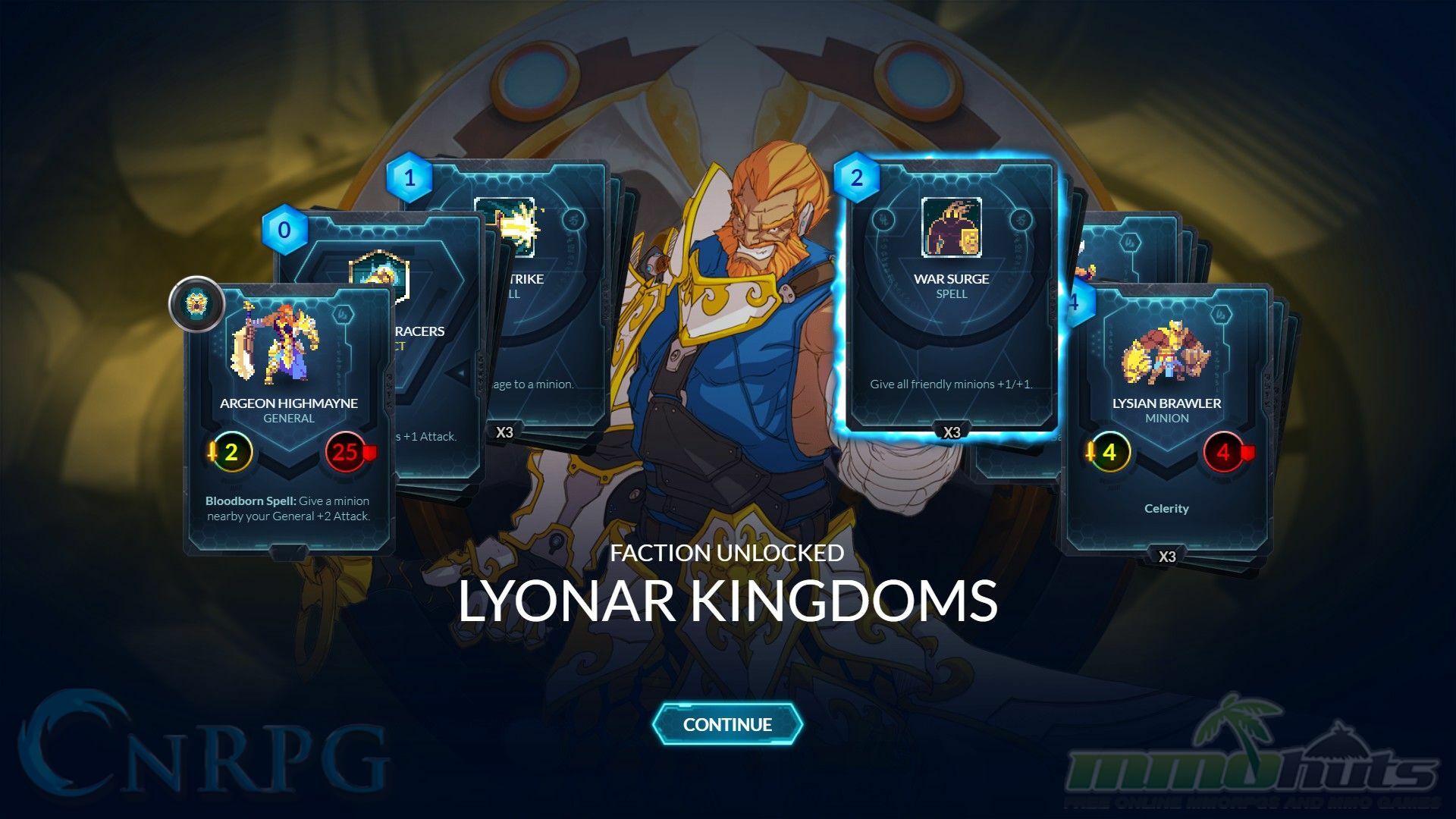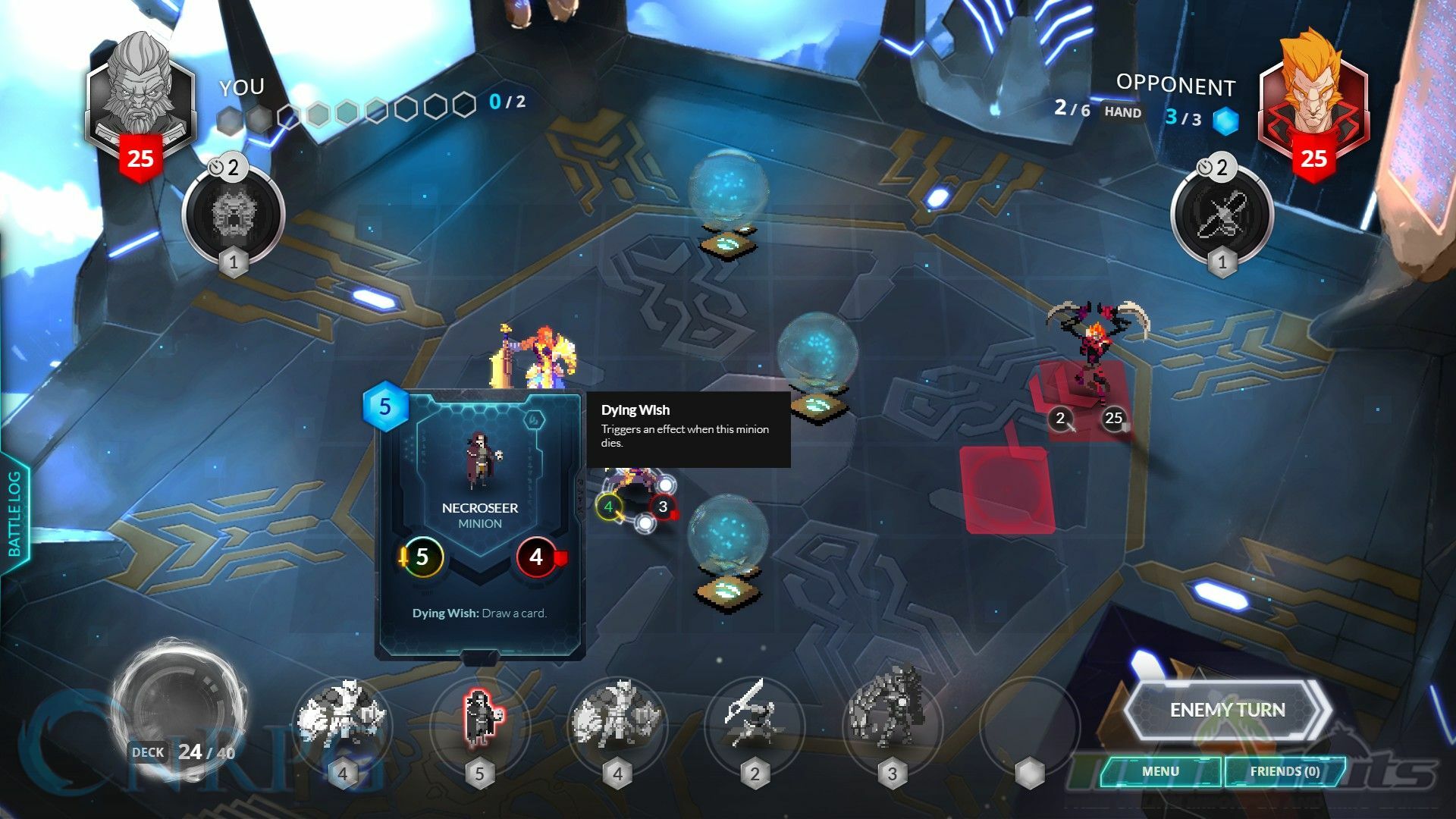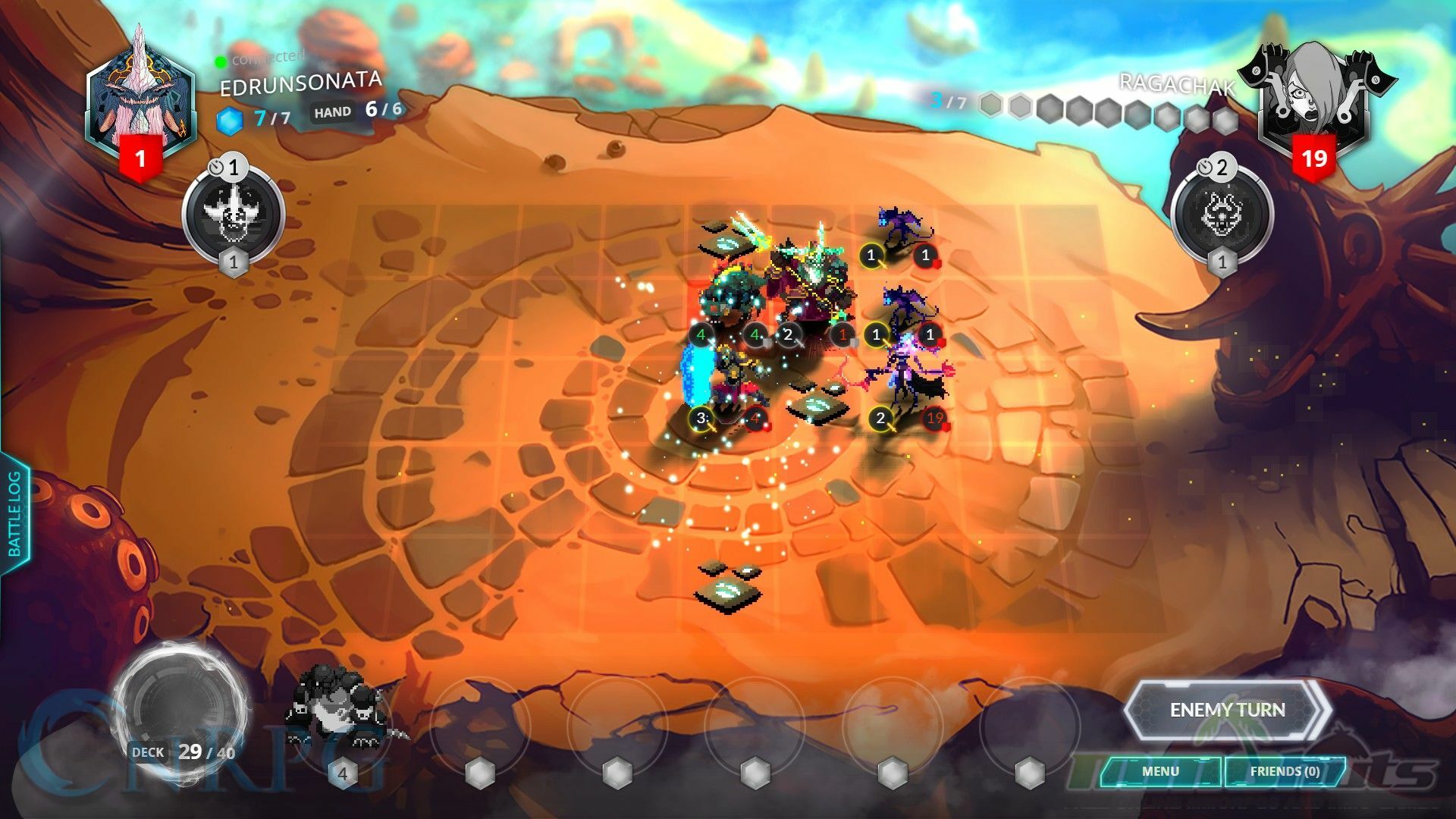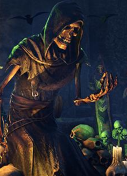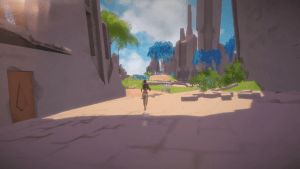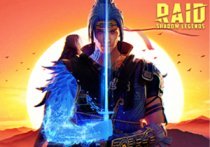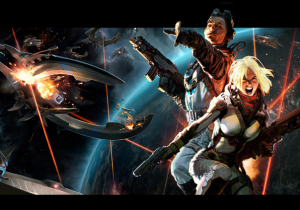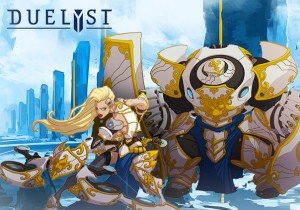Duelyst Review – Board Game Tactics Meets CCG Goodness
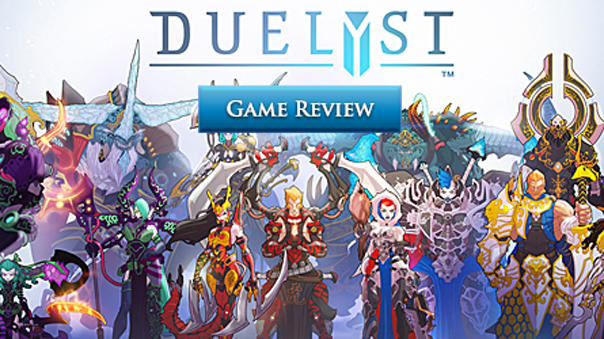
Are you tired of everyone comparing every card game that comes out on PC to Hearthstone? That “blah blah blah, this is so Hearthstone”, et cetera. I was worried that this would be the case when I accepted Duelyst, knowing very little about it. But Duelyst is part card game, part “Dungeon Dice Monsters” or perhaps Chess. You have a deck of cards, a series of factions, and a board. The goal, as in all CCGs, is to defeat the opponent. It’s not about “play these cards, win the game with this combo” like it might be with Infinity Wars, MTG, Hearthstone, or any other card game I’ve ever played. It’s not pay-to-win, it’s genuinely fun, and even without having all of the best cards in the game I was able to compete [and win!] on the ladder.
Duelyst is a game of strategy that stands above and beyond any other card game that I’ve played in recent memory. It has memorable characters, cool art and sound, and tactics. Simply having the right cards isn’t good enough. It’s how you play them, where you move them on the board, and how your opponent reacts to them. Sure, I can flood the board with shadows in my Abyssian deck [and do!], and sure, my opponent can board wipe them. But what happens when I do it again the very next turn? What do they respond with? This isn’t just a card game. It’s a brain game. When I asked my friends who I play Magic with, their response was “I’ve been playing this for a month or so, where the Hell have you been?” Which I had to respond with, “Clearly, the wrong place.”
With over 300 cards in the game, you might think it would be frustrating and expensive to acquire them. Such is not the case! You receive gold every two wins, there’s a first win of the day bonus, and quest/challenges that also give gold. Not to mention, that in September it received its first expansion, Denizens of Shim’zar which added 94 cards to the collection. 100 gold means one pack of cards. I easily can get a pack or two a day with no effort, provided I’m winning. I win far more than I lose I feel. You can also disenchant cards you don’t want/use for Spirit to craft new cards, a’la most other card games. However, it’s awful, like in every card game that’s ever existed. You have to sacrifice your current collection to craft new cards. And the exchange ratio never seems fair.
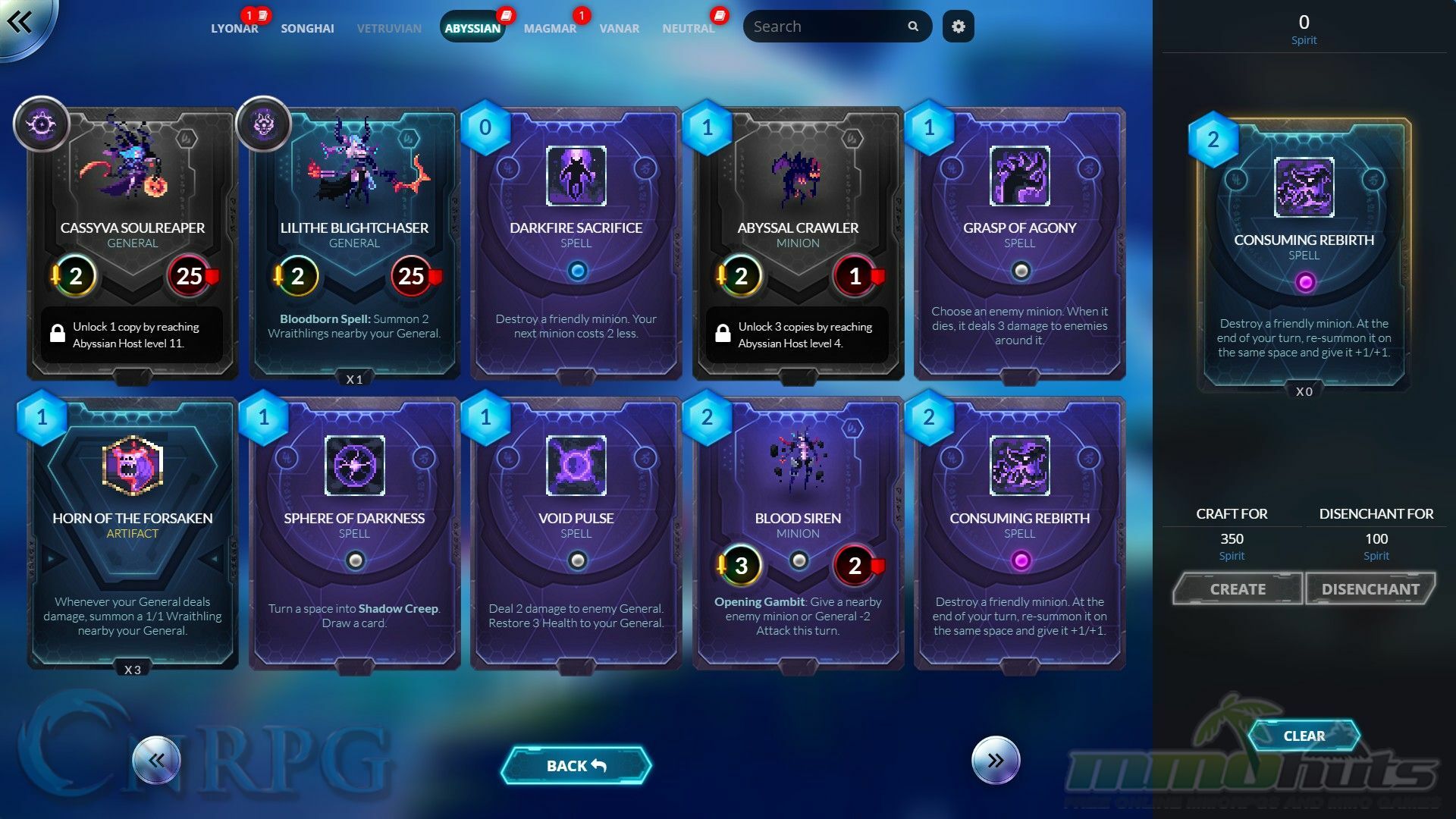
With all the heroes and various factions to level up your standing with, Duelyst can be a serious time sink.
In addition, winning matches with a faction levels them up, which gives powerful cards, and even new Generals! Each faction appears to have two generals, a starting General, and an alternate option at level 11. At 49/50 you get Prismatic versions of those Generals. And if you’re asking “How do they make money then!?” it’s through cosmetics and going faster. There are alternate skins for the Generals, and buying more packs of the cards is definitely faster. But you certainly do not need any of that to be competitive as far as I’ve seen. Skill makes the real difference.
Let’s spend a little time explaining what each faction does, which will help you determine what you want to play! Each one plays different, and it’s not really explained in-game quite so much. The tutorial shows you kind of what the Lyonar does, but that’s about it.
Lyonar: Lyonar entails high health and lots of Provoke, which means enemies must attack them first. Lots of heal spells keep these sturdy units around to provide the beating your foe richly deserves.
Interesting Cards: Divine Bond [+Attack based on Health], Lightchaser [When any minion/General is healed, get +1/+1], Sunriser [When any minion/General is healed, deal 2 damage to all nearby enemies], Sunstone Templar [When this unit attacks/counterattacks, dispel that unit].
Songhai: Quick, agile, strong [but low-health] units define Songhai. Lots of combos, synergy and ludicrous burst damage. This is probably the most combo-intensive faction, but they suffer greatly if you wreck their combo before they can initiate, which tends to be possible when factoring in their low health and few defensive options.
Interesting Cards: Tusk Boar [Rush, Return to your hand at the beginning of your turn], Celestial Minion [Whenever it deals damage to a creature, destroy it], Chakri Avatar [Whenever you cast a spell, it gains +1/+1], Inner Focus [Reactivate a friendly creature with 3 or less attack], Artifact Defiler [Destroy all artifacts on a general].
Vetruvian: Low physical attributes, but insanely powerful spell effects. A host of small creatures and lots of card draw! You control the field of battle, where your opponent goes or does not go, or you lose! Dispelling is also your bane, making those powerful magical beings just a pile of chumps to be slapped around. You can create Dervish tokens, but if you don’t buff them with Dunecaster, they just go away. Your foe can also outposition you, ruining well-laid plans.
Interesting Cards: Dunecaster [Opening Gambit: Give a creature +2/+2; if it was a Dervish, it doesn’t fade out], Wind Slicer [Lower cost of all structure minions in your hand by 1], Mirage Master [Becomes a copy of an enemy minion], Aurora’s Tears [This turn, your General gains +2 Attack for each equipped artifact], Scion’s Second Wish [Give friendly minion +2/+2; it can’t be damaged by enemy Generals]
Abyssian: Evil hordes of vile shadow creatures, removing big threats by annihilating them outright, big late game damage, and the Deathwatch specialty is incredibly powerful with a good army. You’ll want to play the Deathwatch minions before the attack phase, and enemy deaths count towards Deathwatch. As long as something dies… Dispel, and boardwipe can mean the end of Abyssian though. They tend to rely heavily on Deathwatch.
Interesting Cards: Darkspine Elemental [Double damage dealt by friendly Shadow Creep], Nightsorrow Assassin [Opening Gambit: Destroy nearby enemy with Attack 2 or less], Reaper of the Nine Moons [Deathwatch: Summon a random minion from the opponents deck], Deathfire Crescendo [Give a creature Deathwatch: Gain +2/+2], Wraithling Swarm [Summon 3 Wraithlings near you], Wraithling Fury [Give a Wraithling +4/+4]
Magmar: Big, mean, powerful hulking behemoths! That’s the name of the game with Magmar. It takes a while to get moving, but when you do, you throw absolutely insane damage around the field. While it’s amazing to behold, the spell cost can be very very high. Some of your spells can also damage your own creatures and general, so be very careful.
Interesting Cards: Spirit Harvester [At the end of your turn, deal 1 damage to ALL minions], Unstable Leviathan [At the start of your turn, do 4 damage to a random minion or General], Diretide Frenzy [Give a creature +1 Attack and Frenzy], Plasma Storm [Destroy ALL minions with 3 or less Attack], Metamorphosis [All enemy minions become 1/1 Magma with no powers til the end of their turn]
Vanar: Vanar probably have the best creature removal in the game. While you have very little in the way of card draw, what you have is solid. Using Infiltrate/Avalanche zones on the field, you can make some intense overwhelming moments of victory. But those Area of Effect spells can be avoided and waste your mana/time. While they have cool Walls, they mostly have no attack, and are weak to AOE counterplay.
Interesting Cards: Glacial Elemental [Whenever you summon a Vespyr Minion, deal 2 damage to a random enemy minion], Voice of the Wind [Whenever you summon a minion from your hand, summon a 2/2 Vespyr Winter Maerid nearby], Bonechill Barrier [Summon 3 joined 0/2 Vespyr Walls; minions that attack them are stunned]
Now that you know a bit about the factions, let’s look at the gameplay! Player 1 is on the left, Player 2 is on the right. It’s a 5×9 tiles board, and there are a few weird orbs on the map towards the middle. These are Mana Orbs; grab them to gain a bonus to your overall Mana Pool, which normally generates at one mana per turn. Much like in other card games, you can replace 2 of your cards out of the 5 you begin with before the game gets going [You can only have 3 of each card in your deck as an aside]. You play creatures and cast spells only during your turn. If you attack a creature, it will attack back and the same goes for generals. Unlike other games, this only seems to have one way to win and that’s to pummel your opponent’s general into submission. Creatures for the most part can only move two spaces, as can your General, and you can only summon creatures near you, unless they have an ability that states otherwise.
So what do you do? Move close to the Mana gems as fast as possible and play a cheap creature or a creature with Rush that can move onto them. You have artifact cards that can only be equipped to the General which can have a variety of interesting effects on the game as a whole. The end-game is to kill the other General before they can kill you, and it’s not just a matter of spamming creatures to swing blades at each other until one falls. That would be boring. It’s a digital, collectible game of chess. Each general has their own innate ability that recharges every few turns, and they all synergize with their deck, as well they should. One of the definite downsides for most decks is that if you lose your board presence it can be incredibly hard to come back. Luckily I play Abyssian, and I almost always have a creature answer while I wait out a better move on the board. There are crazy powers though, like being able to attack a whole row/column, ranged combat, provoke [guard], creatures that return after death and so much more. There’s literally a way to play this for everyone. But you can’t dual-class/cross-faction. However there are neutral cards which are probably far more powerful than they need to be. The Neutral cards are very flexible and incredibly powerful.
There are a small handful of gameplay modes, but it’s just enough to keep me interested. The lack of a Casual Mode doesn’t bother me, because all I want to do is compete and be as good as I possibly can be. You can either play against the AI, play against people on the Ladder to climb as high as you can, or work on solo challenges to learn the game mechanics of Duelyst to understand just how to get better. There is also the Gauntlet, a typical Draft Mode where you pick a Faction [out of three random ones] and draft a deck together. Much like other games, 150 gold is the cost to get in. The gauntlet ends at 12 wins or 3 losses, and the higher you go, the better the rewards are. Though, the randomness does not appeal to me; I’ll stick to the Ladder if that’s all the same to you.
It’s not a downside, but it’s a lot slower than say, Hearthstone or Magic: the Gathering. The turns are strategic, and quite a few things happen during them. It’s not like say Hearthstone where you can make an explosive game-changing move in one turn that just obliterates the other persons’ will to live. But there are some other things that make this card game special, different. There’s the Replace function, which lets you replace a card with your hand, once a turn with the top card on your deck. This is an amazing feature because it can either save you in your darkest hour or be a humongous disappointment. The gameplay is really quite simple. Creatures that come into play can’t act unless they have an ability that says so, and every attack in melee range has a counter attack. Ranged units can also counterattack blast characters I do believe. I also like that the Ladder Seasons are pretty short, and it’s yet another way to get rewards. This is not a game where if you don’t spend a ton of money you aren’t going to do well. Not to mention they are constantly putting out new cards and working on expansions. It’s still new, but it’s growing and showing that you don’t have to be Hearthstone to be successful.
Let’s Thrown Down a Facedown! Great [4/5]:
Sure, this game doesn’t have trap spells, counterspells, or things of that nature. But that in no way makes this a bad card game. From the outset, you might think “Hurr, let’s capitalize on Hearthstone” but that is in no way the case. Normally I say you don’t need to reinvent the wheel, but this game did it, and did it in a wonderful way. The graphics are simple, 8/16 bit style art, with cool little explosions and spell effects. That isn’t a detriment even by a little. You don’t need a billion-dollar art budget or copy what’s popular to make a stellar card game! The 2D board feature is the best thing about it. I can sit down, play a few matches and go back to what I was doing. Or, more likely, I sit down, start playing, and suddenly it’s Monday morning and I have ten hours’ worth of backlog to make up for because all I did over the weekend was watch it rain and play a card game.
The long and the short of Duelyst is it’s refreshing and new while using just enough of familiar game mechanics to keep people focused on it. It’s easy to learn, and you will only be as good as your chess game is. If you can’t outthink or predict what your enemy is going to do, you’re going to have a bad time.
Pros:
+ Duality: It’s a board game with a card game! It’s unique, refreshing and a lot of fun!
+ Cards: The cards don’t feel like they are all just ripoffs of other games. There’s overlap, but each faction feels special.
+ Decks: You don’t have to buy decks. You unlock them all quite easily.
Cons:
- Damn Neutral cards are ridiculous/Can replace your main faction cards.
- Lack of “Casual” Mode might turn off some players.
- The card crafting system is awful, much like in every game ever.
Duelyst Review Gallery
Articles You May Enjoy
- Moon Hunters: New Details on World Map, Map Generation and More
- Kitfox Games has released new details on their upcoming 4 player co-op game, Moon Hunters, featuring details on World Maps, Procedural Generat...
- Legend of Edda Global Releases 3rd Expansion
- JC Planet has announced that it has released Big Expansion of the third Legend of Edda: Global Edition. This 3rd expansion brings vast new exc...
- League of Legends Preseason 3 Changes
- Riot Games Jatt and Morello discuss massive changes set to shake the League of Legends meta including new and redesigned old items, a complete...
Videos You May Enjoy
-
cacaballz
-
Ragachak
-



